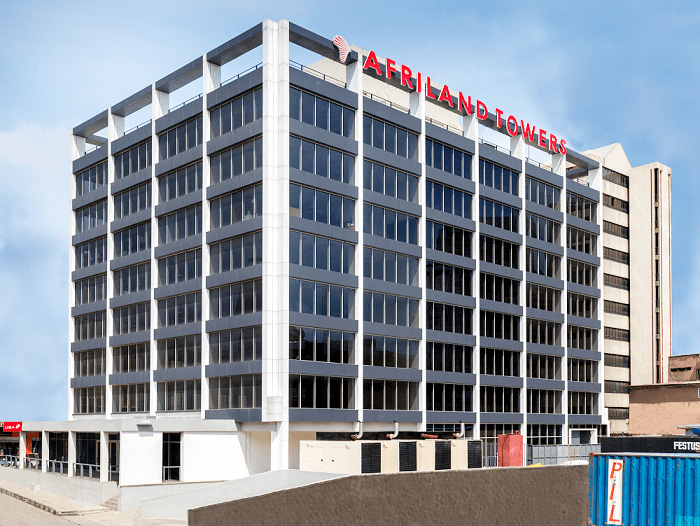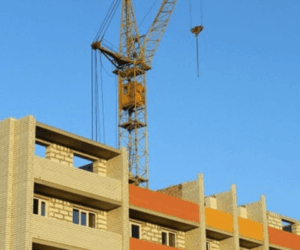0
The dark plume of smoke that rose from Afriland Towers days ago was more than a fire incident, it was a grim reminder of how fragile human life is in the face of emergencies, and how unprepared even the most “certified” buildings can be when disaster strikes.
Ten lives were lost, scores injured, and countless more traumatised.
In the aftermath, Afriland Properties, managers of the landmark building, released a comprehensive FAQ to clarify details and counter speculation.
The statement, signed by Chukwunonso Okafor, Head of Brand, Marketing, and Corporate Communications, gives a glimpse into the chaos that unfolded and the difficult questions the company now faces.
Afriland confirmed that the blaze began in the inverter room in the basement.
“Safety protocols were activated immediately,” Okafor said, but the ferocity of the fire meant smoke and heat spread faster than anticipated.
Within minutes, the entire basement and upper levels were filled with thick, black smoke that moved quicker than flames.
Perhaps, the most disturbing images from the inferno were those of occupants leaping from windows to escape suffocation.
Eyewitnesses posted videos on social media that went viral, fueling criticism of the building’s preparedness.
Afriland’s explanation was straightforward: smoke compromised visibility, blocked escape routes, and created panic.
“Some occupants resorted to exiting through the windows in their efforts to reach safety,” the company admitted.
Communication broke down, and staff found themselves fighting not just fire, but chaos itself.
Were the Alarms and Systems Working? Afriland insists the building was properly equipped with alarms, smoke extractors, and fire safety systems in compliance with regulations.
The alarms went off, though some staff claim they didn’t hear them, a discrepancy still under investigation. Smoke extractors and extinguishers were also in place, but their effectiveness was limited by the sheer speed at which smoke spread.
This detail is crucial. Fire safety experts often warn that it is not the flames that kill first, but smoke inhalation. In this case, smoke, not fire was identified as the leading cause of casualties.
Initial public outrage suggested that it took “over three hours” for firefighters and ambulances to arrive.
Afriland rejected this narrative. The company clarified that the fire started at about 1:20pm, not 10:00am as rumored, and that in-house safety officers, dubbed “fire champions”, activated protocols immediately.
First responders, according to Afriland, arrived about 20 minutes later.
That said, many Lagosians remain skeptical. Delays in emergency response are not new in Nigeria. Just last year, a fire at a Lagos market smoldered for hours before professional fire trucks showed up.
In a city with a population exceeding 20 million, overstretched fire services and chaotic traffic often combine to make timely intervention difficult.
Afriland pointed out that the Towers was not lacking in planning. There are two emergency staircases, multiple ground exits, and documented safety procedures.
Fire drills were conducted regularly, often overseen by fire service personnel. Each floor even had a designated fire warden trained annually.
But, drills are not reality. In practice, the rapid spread of smoke rendered escape routes unusable.
Stairwells, designed to be lifelines, became smoke-filled traps.
In panic, staff smashed windows to let air in and, in some cases, jumped to avoid suffocation.
Afriland confirmed the worst fears: 10 fatalities, including members of United Capital Plc and the Federal Inland Revenue Service. The cause was smoke inhalation.
“We extend our deepest condolences to their families and are working closely with the affected organisations to ensure that the bereaved are supported with compassion and practical assistance,” the company said.
For survivors and colleagues, the pain is sharp. Questions linger about whether more lives could have been saved if smoke extractors had worked more effectively or if evacuation had been faster.
One burning question is whether staff will be asked to return to a building where colleagues died.
Afriland’s answer is clear: not anytime soon. The Towers will undergo a full structural, safety, and regulatory review before reoccupation. Alternative work arrangements are in place until independent regulators certify the building completely safe.
At the same time, Afriland has introduced grief counseling, medical checks, and flexible work policies to help staff cope.
“This is a time of mourning and healing, and staff welfare remains our highest priority,” Okafor stressed.
Yes, the building was insured. Afriland says its responsible officers are reviewing details with insurers, pending the official investigation report.
But, insurance payouts do not erase trauma.
Recognising this, Afriland has embarked on a comprehensive safety review, not just of Afriland Towers, but of all facilities under its management.
Independent fire safety experts and regulators will be part of the process, with a goal of raising standards above the bare minimum required by law.
On the fate of Afriland towers, Okafor in the FAQ explained that the building will remain closed indefinitely, and added that thorough safety audits, deep post-fire cleaning, and system upgrades, including reconstruction where necessary, will precede any reopening.
“Re-occupation will only take place once the building has been certified safe by the relevant authorities,” he stated on behalf of the management.
Afriland admits that there are hard lessons to be learned. These include the need for stronger disaster-prevention systems, better coordination during emergencies, and more rigorous enforcement of safety drills.
The company is also working closely with regulators. Their findings, Afriland insists, will guide corrective measures going forward.
“We value and welcome their oversight,” Okafor emphasised.
Afriland has promised that this incident will not derail its other operations.
“Our other properties continue to operate safely. However, we are proactively reviewing all facilities under our management to ensure they meet the highest safety standards,” the company noted.
But, the bigger question remains: is Lagos, and Nigeria at large, prepared for emergencies in an era of rapid urbanization and vertical growth? The Afriland Towers tragedy underscores that smoke, panic, and confusion can turn even well-equipped buildings into death traps.
As Lagos returns to its relentless rhythm, Afriland Towers stands quiet, its glass reflecting not just the sun but a city’s grief. Families mourn, survivors nurse trauma, and questions linger about what could have been done differently.
What is clear is that smoke, not flames, took lives. Those safety systems, though present, proved inadequate under real conditions. And that for all Nigeria’s urban growth, its safety infrastructure remains fragile.








